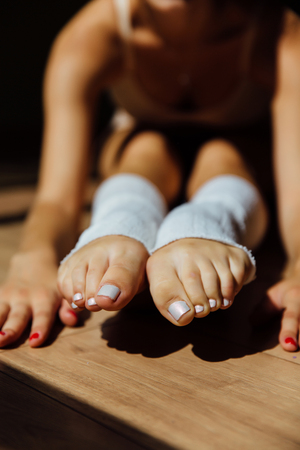1. Understanding Fungal Infections in Indian Climate
When the monsoon clouds gather and the summer sun blazes across India, our daily lives are shaped by a unique mix of humidity, sweat, and fluctuating temperatures. It’s during these seasons that fungal infections become particularly rampant in the country, affecting people from all walks of life—whether you’re navigating the crowded Mumbai local trains or working long hours in the fields of Punjab. The moist conditions typical of Indian summers and monsoons create a perfect breeding ground for fungi, making skin problems like ringworm (known locally as “daadu”), athlete’s foot, and candidiasis frustratingly common. Many families have stories of battling itchy rashes after playing cricket on wet grounds or dealing with persistent infections during annual Chhath Puja rituals. In traditional Indian households, elders often warn against walking barefoot on damp floors or keeping clothes sweaty for too long, reflecting an age-old awareness of these seasonal health challenges. The combination of overcrowded cities, frequent waterlogging, and the use of synthetic clothing only adds to the risk. Understanding how deeply fungal infections are woven into the Indian experience each monsoon and summer is the first step towards prevention and healthier living.
2. Personal Hygiene Practices for Prevention
Maintaining proper personal hygiene is essential to prevent fungal infections during the humid monsoon and scorching summer months in India. Our climate makes us sweat more, especially in regions like Mumbai or Chennai, and moisture trapped in clothes or on the skin becomes a breeding ground for fungi. Here are some practical hygiene tips that fit easily into daily Indian life:
Regular Washing and Drying
Bathe at least twice a day, especially after coming home from outside or after physical activity. Use a mild, preferably ayurvedic soap to avoid skin irritation. Focus on cleansing areas prone to sweating, such as underarms, groin, between the toes, and under the breasts.
Patting Dry vs Rubbing
After washing, always pat yourself dry with a soft towel instead of rubbing vigorously. Rubbing can cause micro-abrasions that allow fungi to enter the skin. Make sure every fold of your skin is completely dry before wearing clothes. In many Indian households, using a separate towel for each family member is common practice—this helps prevent cross-infection.
Staying Clean While Travelling or at Work
During commutes on crowded buses or trains, or long hours at work, maintaining hygiene can be challenging. Carry a small handkerchief or gamcha (traditional cotton towel) to wipe off sweat regularly. If possible, keep an extra set of undergarments and change once during the day if you sweat excessively. Also, wear loose-fitting cotton clothes that absorb moisture well.
Quick Reference Table: Daily Hygiene Checklist
| Activity | Frequency | Indian Tip |
|---|---|---|
| Bathing/Showering | Twice daily | Add neem leaves to bathwater for natural antifungal effect |
| Drying Skin | After every wash/sweat | Use a soft towel; pat gently |
| Changing Clothes | Whenever damp/sweaty | Cotton kurtas & pyjamas are ideal in hot weather |
| Cleansing Feet/Toes | Daily before bedtime | Sit on a chatai (mat) and air-dry feet after washing |
This routine may seem simple but remains highly effective, especially when adapted to our Indian way of life. Following these habits consistently can greatly reduce the risk of developing fungal infections during India’s challenging monsoon and summer seasons.

3. Choosing Breathable Clothing and Footwear
When the monsoon clouds gather and the summer heat rises in India, selecting the right clothes and footwear becomes essential in preventing fungal infections. Humidity traps sweat on our skin, especially in areas like underarms, groin, and feet, creating an ideal breeding ground for fungi. The first step is to choose traditional attire that supports ventilation. Cotton kurtas, loose salwar kameez, and dhotis are time-tested options across India because cotton fabric absorbs moisture and allows your skin to breathe. Avoid tight-fitting outfits as they restrict airflow and trap sweat against the body.
For those who prefer modern styles, opt for linen shirts or loose cotton t-shirts and pants. Synthetic fabrics like polyester or nylon should be avoided; they tend to retain heat and moisture, increasing your risk of skin irritation and fungal growth. When it comes to footwear, embrace open designs like chappals, sandals, or kolhapuris instead of closed shoes or sneakers during humid weather. These allow air circulation around your feet and keep them dry. Remember to keep socks cotton-based if you must wear them—and change them daily. Whether heading out for work or attending a family gathering, dressing smartly with breathable fabrics isn’t just about comfort—it’s an important step in staying healthy through India’s challenging climate.
4. Home Remedies and Natural Solutions
In every Indian household, monsoon and summer bring not just the joy of rain and mangoes but also a renewed focus on traditional remedies to prevent fungal infections. Over generations, our grandmothers have trusted simple ingredients from the kitchen or garden to keep skin healthy and fungus-free. Here’s a closer look at some of these time-tested solutions, deeply rooted in Indian culture.
Neem Leaves: The Antifungal Warrior
Neem is practically synonymous with cleanliness in India. Families often boil neem leaves in water for bathing, especially during humid months. This age-old ritual helps cleanse the skin and acts as a natural shield against fungal growth thanks to neem’s strong antifungal properties. Applying a paste of fresh neem leaves to affected areas is another common practice, particularly in rural households.
Turmeric: The Golden Healer
No Indian kitchen is complete without turmeric, known locally as ‘haldi’. Its anti-inflammatory and antifungal abilities make it an everyday remedy for skin issues. Mixing turmeric powder with water or coconut oil forms a paste that is applied directly to itchy or red patches. Many believe this not only soothes irritation but also stops the spread of infection.
Coconut Oil: Everyday Moisture and Protection
Coconut oil isn’t just for cooking—it’s used extensively across India as a natural moisturizer. Its lauric acid content makes it effective against fungi like Candida. Massaging a thin layer of pure coconut oil on clean, dry skin after bath creates a protective barrier that prevents fungal spores from taking hold, especially in sweat-prone areas.
Quick Comparison of Popular Home Remedies
| Remedy | How It’s Used | Common Benefit |
|---|---|---|
| Neem Leaves | Bath water, direct paste application | Antifungal cleansing, itch relief |
| Turmeric | Paste with water/oil, direct application | Reduces inflammation, fights infection |
| Coconut Oil | Massage onto skin post-bath | Keeps skin moist, inhibits fungus growth |
A Word of Caution from Local Wisdom
While these remedies are widely trusted and form part of daily routines in many Indian homes, it’s important to remember that severe infections may require medical attention. If symptoms persist beyond a few days or worsen despite home care, consulting a dermatologist is always recommended. Still, these natural solutions offer gentle prevention and reflect the collective wisdom passed down through generations—making them an integral part of the Indian fight against fungal infections during challenging seasons.
5. Importance of Timely Medical Advice
In India, many people often rely on home remedies or advice from family and friends when dealing with health issues like fungal infections. While traditional methods such as applying neem paste or turmeric can sometimes provide relief, it is crucial to recognise when these home treatments are not enough. If you notice that a rash, itch, or infection is not improving or is spreading, do not hesitate to consult your local doctor or the neighbourhood chemist. These healthcare professionals are well-versed in the common types of fungal infections seen during the monsoon and summer seasons and can recommend effective treatments based on your specific condition.
There can be a hesitation to visit a clinic due to concerns about cost, time, or social stigma associated with skin infections. However, seeking timely medical advice ensures that you get the right diagnosis and medication before the infection becomes severe. Early intervention can prevent complications and reduce the risk of spreading the infection to others in your family or community. Remember, pharmacists and chemists in India are approachable and can guide you on over-the-counter antifungal creams or powders if your symptoms are mild.
Do not let embarrassment or hesitation stop you from asking for help. Prioritising your health by consulting a professional at the first sign of trouble is always better than letting the problem worsen. By being proactive and trusting local healthcare providers, you protect not just yourself but also those around you from common seasonal fungal infections.
6. Community and Environmental Hygiene
In India, where community living is a way of life, maintaining hygiene in shared spaces is crucial, especially during the monsoon and summer months when fungal infections are more common.
Simple Steps for Shared Spaces
Keeping areas like public bathrooms, changing rooms, and temples clean helps prevent the spread of fungi. Encourage everyone in your home or community to mop floors regularly, ensure good ventilation, and avoid leaving wet clothes or towels hanging in shared spaces. In temples, where many devotees walk barefoot, it’s a good practice to wash feet before entering and after leaving, and to regularly clean mats or carpets used for prayer.
Role of Family Routines
Family habits play a big part in preventing infections. Make it a daily routine to clean bathrooms with disinfectant and dry the floors properly. Teach children about the importance of not sharing personal items like towels, soaps, or footwear. Simple habits such as washing hands and feet after coming home from outside can go a long way.
Working Together as a Community
In housing societies or apartment complexes, residents can form small groups to check cleanliness in common areas. A weekly cleaning drive involving all families can make a big difference. By following these small but significant steps, we can protect not just ourselves but also our neighbours from troublesome fungal infections that tend to spread quickly during hot and humid seasons.
